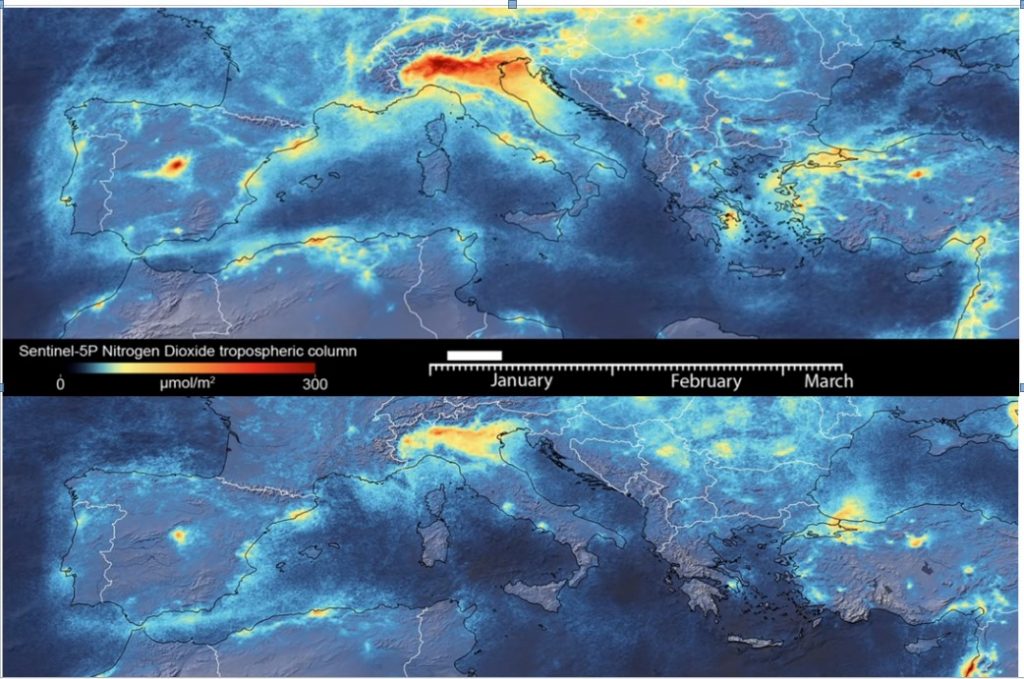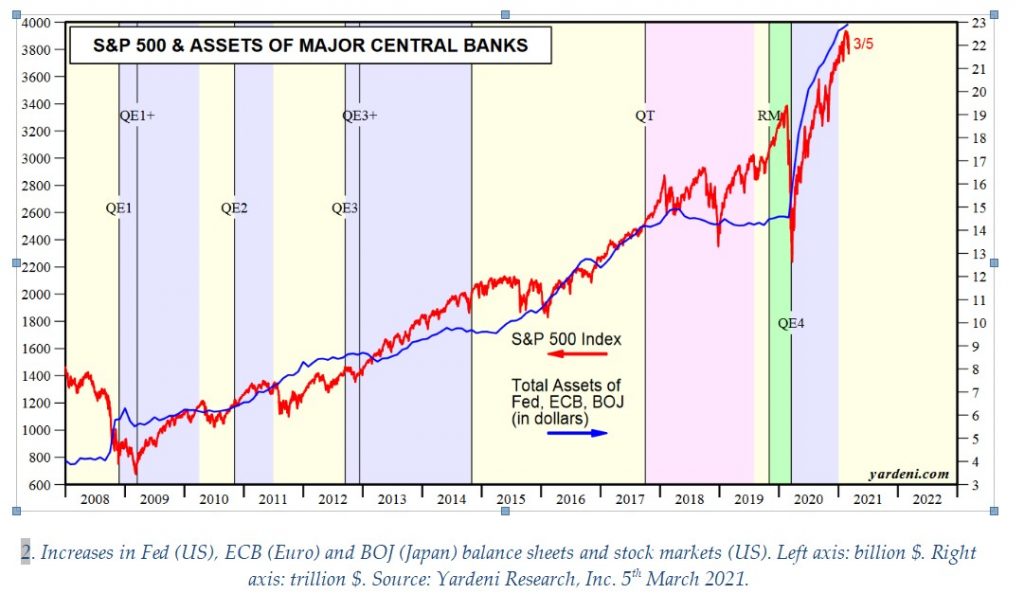While we are busy with the pandemic, the climate and employment crises have not gone away.
Rubén Vezzoni is a PhD candidate in Political, Societal and Regional Change at the University of Helsinki

– E quindi uscimmo a riveder le stelle.
Dante Alighieri
Divine Comedy, Inferno, XXXIV, 139
The verge is where we are. The pandemic is not yet over, but it will be eventually, or will it? Surely COVID-19 will, in a medical sense, come to an end. But the new fear is that it could be replaced by covid-2something rather than normality as it was. We live on the verge of a pandemic which seems slowly getting closer to an end, but with enduring consequences. The biosphere, our global ecological niche, is also on the verge of a collapse, and it has been for a few dozens of years. In 2020, an unprecedented economic shut down has brought CO2 emissions down by almost 6%. For the world, it has been like getting rid of the emissions of a country like India. But carbon dioxide is not all that matters. Overall, regional reductions in other pollutants, for instance NO2, have also been a blessing for densely populated areas battered by traffic and industrial pollution. The Po Valley in northern Italy is a point in case. Its roughly 20 million inhabitants have benefited from a drastic drop in NO ₂ (a major cause of premature death in the region), although at the cost of an extremely strict lockdown in the spring of 2020.

European Space Agency.
Nitrogen, sulphur and carbon gaseous emissions, ozone, methane, and aerosols have been reduced. Even wildlife had a break from humanity, particularly tourists. In some cities animals made very romantic comebacks, with coyotes and mountain lions strolling down the streets of San Francisco and dolphins swimming in the waters around Istanbul. All really nice and beautiful. But it was not meant to last. As human activities slowly recover, adapt, and respond to consecutive waves of the disease, so do previous emissions trends. CO2 emissions have already bounced-back to pre-pandemic levels. Regional trends monitored on a monthly basis have shown that for some countries this is true more than others, such as China’s CO2 emissions which started growing again already in late April 2020. We are still on the verge of triggering the irreversible consequences of a human-made ecological meltdown.
The economic scars of the pandemic
The latest common enemy, the virus, has eclipsed the old pals climate change and financial capitalism. All of a sudden, maps, news, fake-news, counter-fake-news, epidemiological statistics and metrics of any sort have populated our imaginations leaving little room for other reflections. Humans are dying of the virus, and of its consequences. The market economy, that which roughly we can account for in terms of GDP, shrank by 4.4% world-wide, and by an average of 6% in high income economies (-13% for heavily affected countries like Spain). Unemployment levels skyrocketed in the spring of 2020 and are slowly recovering but, unlike CO2 emissions, are yet far from pre-pandemic levels. But GDP tells nothing about its composition, and about the losers and winners of the game.
Not all sectors are suffering the same fate. The most advanced practice of production, that of information technology, is largely determinant in exacerbating differences between frontier and backward sectors of the economy. Both labour-intensive activities, such as tourism, and capital-intensive ones, such as automobile manufacturing, are facing dramatic costs due to the freezing of global trade networks. Even more so, small retail shops are closing down one after the other as consumer turn to global hypermarkets à la Walmart and home delivery services like Amazon. The latter are the real winners of the pandemic: multinational corporations with a strong high tech character. World stock markets, which opened 2021 at record levels, are also optimistic about the eeconomy. Even those stocks which were hit the hardest last spring, like Ryanair or H&M, are now rebounding to pre-pandemic levels. And while the overwhelming majority of people around the globe were entrenched at home, downplaying the problems of transforming their houses into their offices because “well, at least I have a job”, the richest got richer, while the rest suffer what they must.
Imagine all workers of Europe losing their jobs in just one year. This is the magnitude of the 255 million jobs lost in 2020 worldwide. But the real impact of high levels of unemployment goes beyond the figure alone. The “last in, first out” rule of thumb means that losses in worked hours in the labour market impacted mostly precarious jobs (low skill, self-employed, young and temporary workers). Starting from the 80s, a new rhetoric of employability rather than employment has been shifting the objective of macroeconomic policy in OECD countries from job offers to demand. Employability means that workers should be smart, flexible and adapt to market trends – a colourful way to ask for subservience. Unsurprisingly, the labour market has deteriorated in quality, towards low wages, job insecurity and irregular hours. Being part of the labour force has become an increasingly risky and stressful activity, a trend which the pandemic is only reinforcing. The urgency of the moment is overshadowing discussions on minimum wage, working hours, or social security. What matters is to get out of the pandemic, recover normality, and get a job. It seems of little importance, for instance, that the vaccines are privately owned by corporations which lack the productive capacity to meet the global demand; or that the new jobs will likely be of a very precarious kind – and why would they be otherwise, in absence of any counterbalancing force?
A bold vision: green jobs for all
This counterbalancing force is to be found in collective action. The public authority, the State, has the capacity to intervene against the negative economic cycle. Once the pandemic is tamed, we will still be facing two major challenges: climate change and massive underemployment of human potential. On the one hand, the ecological transition asks for a radical conversion of the energy sector, restoration of habitats, and re-localisation of essential services. On the other, people are left idle at home, wondering and worrying about their inadequacies for not finding a job which is not even there in the first place. On paper, the solution is pretty straightforward: create the green jobs we need for the millions of people that want to work. Budget constraints are not an issue. Several economists (see the research of the Levy Economics Institute or the Centre of Full Employment and Equity among others) have extensively demonstrated that the effects of a properly planned full employment scheme on aggregate demand and reduced social welfare costs would largely compensate for its costs. Inflationary pressures are also discarded, as after a peak in the first years of the stimulus (which for the US economy pre-COVIS would amount at less than 0,75%), the impact on inflation is very modest. On the contrary, a buffer stock of employed workers provides a structural price stabilisation mechanism.
Now, the 21st century is not 1933. We do not need to send white young males to build dams in Alabama like Roosevelt did. In a way, today’s task is easier in that our economies are floating at low levels of capacity utilisation, in which employment mostly concentrates in global metropolis, and with increasing exposure to eco-systemic fragilities. New jobs can be instantly created for the fulfilment of under-provided needs, such as building energy-efficient infrastructure, restoring ecosystem functionalities, and re-localising labour-intensive services. The carbon footprint of food production, transportation, remote work and caring activities can be dramatically cut by providing more of these services inside the communities where they are required. Besides being a fundamental human right, work is a social duty that policy makers have been wantonly disregarding. The private sector currently provides most jobs, and sets the standards. However, if the government starts employing all who want to be employed, it effectively creates also a set of minimum acceptable benchmarks for the private market, in terms of wages, hours, stability, and social security benefits.
Yet, current responses to the pandemic are still confining governments and local communities to a passive role. At best, public budgets are used to target productive green investments, mostly in the energy sector. Let’s be clear: Biden’s climate policy, the EU Green Deal or even Johnson’s “green industrial revolution”, are to be welcomed as a paradigmatic shift. Institutional environmentalism is here to stay. But are these policy proposals enough? For instance, the new US National Climate Adviser, Gina McCarthy, expects to attract and leverage private investments through wide-ranging public procurement. Surely this will have an impact, especially given the extraordinary magnitude of this stimulus packages. Nonetheless, these green proposals seem simply too dispersive and too slow to structurally transform our climate change inducing economies.
In the meantime, the balance sheets of central banks have expanded by trillions of dollars since the beginning of the pandemic, and the figure keeps growing while this article is being written. But where is this monetary stimulus going? While it is surely been directed also to welfare support, one may wonder if it is also somehow related to the spectacular rebound of stock markets in the last two quarters of 2020. On the contrary, fiscal policy measures remain tepid attempts of patching the sinking boat. Besides some conditionality – like Air France having to cut down its domestic flights – government expenditure is being channelled in the same old ways to support the same old businesses. Perhaps a bit greener, at least in their Corporate Social Responsibility values or Environmental, Social, and Governance (ESG) criteria. If the stick doesn’t train the dog, try with another method not with another stick.

To reverse the ecologically destructive consequences of global financial capitalism, we need new and bold economic ideas. As a starting point, we should (re)discover the primacy of fiscal policy. For example, the government could act as an employer of last resort for ecological restoration. So when the economy shrinks, full-employment policy works as a buffer to make sure no unnecessary losses are induced by vicious spirals of deficient aggregate demand. The public sector grows and keeps everybody on a safe space, above what is deemed to be a decent standard of life. But when the economy recovers, then the private sector can expand and benefit from a labour force which has not suffered the deprivations (read: depreciation of human capital) of unemployment. We need to set new labour standards and fill the essential gaps in green jobs left by the inadequacies of the capitalist market economy as soon as possible. After covid-19, when re-emerging from the depths of this Dantesque Inferno, it will be time for new ideas to show us the way to the stars.


Be the first to comment